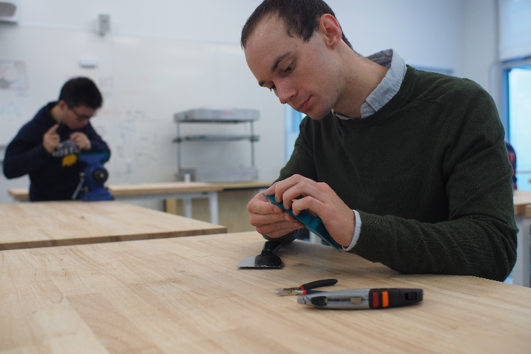Affordable Energy
In collaboration with Lawrence-Berkeley National Lab (LBNL), we are developing a low cost iron-salt battery for our Master of Engineering capstone project. We’ve named the battery “Numa,” a combination of the Swahili words for light (nuru) and iron (chuma). Numa would charge cell phones and provide lighting, both of which are essential to everyday life in developing communities.
Facts About the Developing World
- “More than 2 billion people…have no access to a reliable source of power” – Nuru Energy.
- “Households can typically spend 20-25% of their income on kerosene” – WSU.
- “Half of the population in Sub-Saharan Africa lives on under $1.25 a day” – GiveWell.
- “One customer reported spending…$2.20…a week on transport to charge her phone” – GVEP.

The battery is composed of an iron-salt solution, conductive felt, filter paper, and an iron-rich metal sheet. These core ingredients make the battery both environmentally friendly and cost efficient. By replacing components as they run out, no materials are wasted, and the user reaps the benefits of an inexpensive low power solution.
We fabricated our prototypes using 3-D printing at the new Jacobs Hall Institute for Design Innovation. This method allowed us to rapidly test and assess new designs, so we often created a new prototype each week. By the end, we had completed over twenty distinct prototypes.


The Numa system is a complex integration of electrolyte flow, electronics along with sealing and compression mechanisms. We eventually brought a pyramid-shaped design, allowing end-users to assemble it intuitively and optimizing the space efficiency. With two Numa cells to power the Numa System, we were able to light an LED or charge a cell phone.

Team (from left): Ben Williams (Mechanical Design Engineer, User Experience, Mechanical Design), Amine Oueslati (Materials Engineer, Electrochemistry, Material Selection), Jerry Wang (Mechanical Engineer, Mechanical Analysis, Manufacturing and Tolerance)
← View all Capstone Projects




